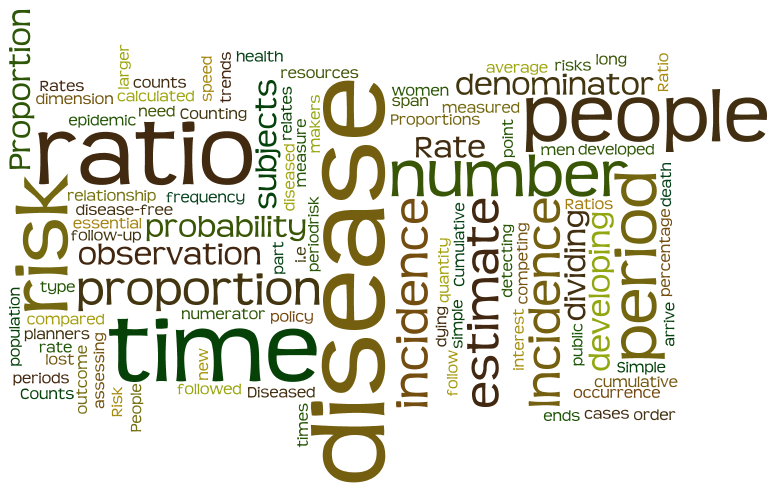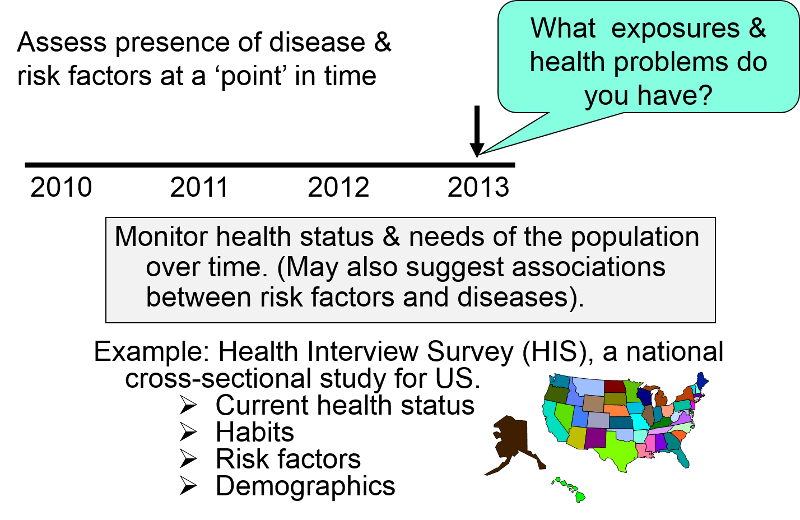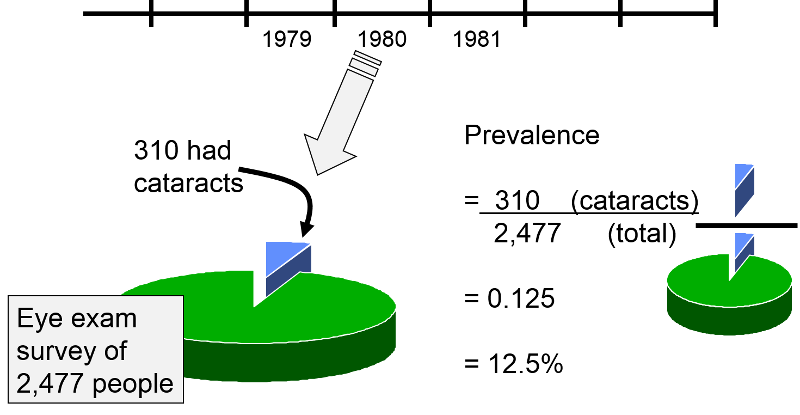Data on the Prevalence of Disease Are Useful in Describing
Analytical studies attempt to describe the prevalence of for example disease or non-disease by first beginning with a population base. We assessed the heterogeneity and time trends of.
Or 11750 per 100000 persons.

. This is a centralized and comprehensive source of information and analyses on global health RD activities. Incidence describes the current risk of getting a certain disease while prevalence tells us how many people currently live with the condition regardless of when or even whether theyve been diagnosed with that particular disease. Evidence-informed policy-making an approach to policy decisions that is.
When the disease is rare or at least. Also called prevalence proportion and point prevalence. So if a measurement of cancer is taken in a population of 40000 people and 1200 were recently diagnosed with cancer and 3500 are living with cancer then the prevalence of cancer is 0118.
There is limited real world data on care patterns of patients with chronic fibrosing ILDs with a progressive phenotype other than IPF. For example conducting tuberculin skin testing in a homeless shelter would provide a measure of the proportion of residents who have been infected with TB. Publicly available data from the Global Burden of Disease Study were analyzed for ischemic heart disease IHD ischemic stroke and ACD risk factors.
These studies differ from solely. Links with this icon indicate that you are leaving the CDC website. This retrospective cohort study used claims data from 2015 to 2019 from the Optum Research Database.
We used all accessible data from multiple sources to estimate the prevalence of mental disorders years lived with disability YLDs and disability-adjusted life-years DALYs caused by these disorders for all the states of India from 1990 to 2017 as part of the Global Burden of Diseases Injuries and Risk Factors Study. Prevalence and incidence are used for different purposes and to answer different research questions. The Centers for Disease Control and Prevention CDC cannot attest to the accuracy of a non-federal website.
At a global level the largest disease burden in 2017 comes from cardiovascular diseases which account for 15 percent of the total. How is Prevalence Reported. Create your own maps and visuals to describe chronic disease burden and trends in your state.
There are several ways to measure and report prevalence depending on the timeframe of the estimate. The Observatory monitors various health RD related data and incorporates these in comprehensive analyses with interactive visualizations to help users track and investigate the development in health RD across many dimensions. A prevalence rate is the total number of cases of a disease existing in a population divided by the total population.
The way prevalence is reported depends on how common the characteristic is in the population. Interact with disease-specific data applications to view incidence prevalence risk factors and trends. The period prevalence should be avoided because.
In contrast to the prevalence the incidence reflects the number of new cases of disease and can be reported as a risk or as an incidence rate. The prevalence odds prevalence 1 prevalence. This article describes the public health impact of Alzheimers disease AD including incidence and prevalence mortality and morbidity use and costs of care and the overall impact on caregivers and society.
A cross-sectional analysis of responses to the 2007-2010 NHANES n12 110. Data on the prevalence of both exposure and a health outcome are obtained for the purpose of comparing health outcome differences between exposed and unexposed. The prevalence reflects the number of existing cases of a disease.
Linking to a non-federal website does not constitute an endorsement by CDC or any of its employees of the sponsors or the information and products presented on the website. Prevalence is a useful measure for quantifying the burden of disease in a population at a given point in time Calculating prevalence of various conditions across different geographical areas or amongst different sub-groups of the population and then examining prevalence of other potential risk factors can be of particular use when planning health services. The prevalence of a disease refers to the proportion of individuals in a population that have a disease at a particular time sometimes also called the point prevalence.
Life expectancy is a summary mortality measure often used to describe the overall health status of a population. This article takes a look at disease prevalence and incidence what this information tells us and how it can be used. Prevalence may be reported as a percentage 5 or 5 people out of 100 or as the number of cases per 10000 or 100000 people.
This article describes the public. It is therefore a measure of the disease burden. Health statistics are a form of evidence or facts that can support a conclusion.
Describe the current prevalence of stone disease in the United States and identify factors associated with a history of kidney stones. Neonatal disorders 7 percent. Therefore the aim of this study is to describe care patterns in these patients.
Design setting and participants. 2021 Alzheimers disease facts and figures. Data from the WHO Global Health Observatory were used to describe prevalence of diverse cardiometabolic risk factors.
Muscoskeletal disorders 6 percent. Life expectancy is defined as the average number of years a population of a certain age would be expected to live given a set of age-specific death rates in a given year. The Special Report discusses the challenges of providing equitable health care for people.
And mental and substance use disorders 5. For the 31 OECD countries. This is followed by cancers 9 percent.
Health statistics are used to understand risk factors for communities track and monitor diseases see the impact of policy changes and assess the quality and safety of health care. An epidemiologic measure that can be used to measure the proportion of a population with a specific infection or disease is called the prevalence ratio. One may hear reference to a period prevalence.
Too common prevalence proportion prevalence proportion.



Comments
Post a Comment